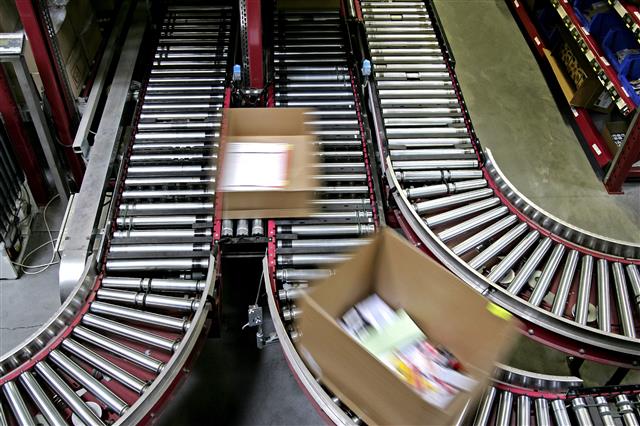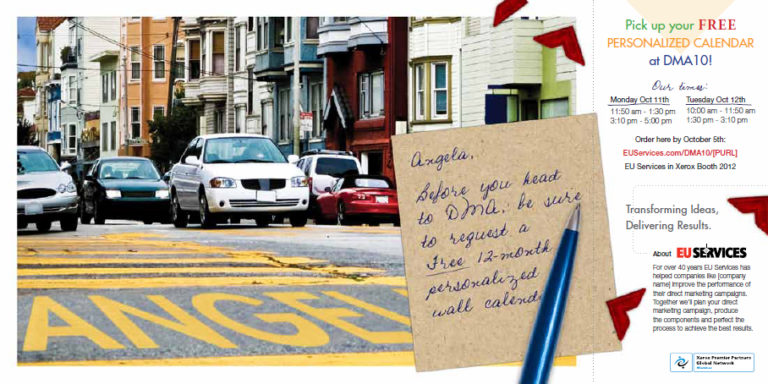Written by Dustin Graupman
Vice President/General Manager Ink Jet Business

I remember when my kids were young they used to tell jokes like, “Dad, what weighs more, a ton of rocks or a ton of feathers?”
I have to admit, the first couple of times I thought, “Of course a ton of rocks weighs more.” Eventually, I caught on to their tricks.
If certain children’s jokes are universal, so are some other things. Death. Taxes. And rising postal rates.
Those are two of the seemingly unrelated thoughts in my mind as I sat and started to think about lightweight paper, inkjet technology, and the changing print marketplace.
Postal rates in the United States are going up again. I think it’s pretty safe to assume that wherever you are, they have done the same or will in the near future. That is a bigger deal for some than for others.
For those in the direct mail business, for companies that mail transactional statements, and for print providers that serve those industries, it is a really big deal.
How big? The impact is obvious as soon as that envelope you are mailing goes from one ounce to anything over one ounce. When it does, the cost goes up by an amount that might make sense to the Postmaster General, but probably not to many others. And if that envelope holds enough sheets to be a flat rather than a smaller bi-fold one, the costs go up exponentially.
Perhaps it’s harder to carry a ton of flats than a ton of business-size envelopes, I’m not sure.
Regardless, it makes a compelling case for the ability to print on lighter weight papers.
That’s not feasible with a lot of digital print solutions let alone inkjet systems with water based inks. But a couple of key factors have come together to make it possible—and to make the business of printing and mailing much more affordable.
First, there are advances in paper technology. These new papers are incredibly important because traditionally, inkjet printers and the accompanying inserters can’t reliably handle paper lighter than 20- or 24-lb. bond (75 or 90 gsm).
But now, Enterprise Postal Advantage™, which has been around for over five years, is a lightweight paper (18 lb or 67 gsm) and offers a number of benefits. Enterprise Postal Advantage has the right thickness and rigidity to reliably travel through both printer and inserter. It also folds easily with a crisp crease. These attributes combine to make a big difference on the bottom line of mailing costs.
Right off the bat, you can fit more sheets in the same one-ounce envelope. Therein lies the value of the sheet. More feathers in that ton, if you will. Also, because of its superior folding capabilities, more mailings that used to go out as flats can now be bi-folded, providing tremendous savings—as much as $.44 per piece. Combine that with the fact that you get more yield per 50-inch roll with 8% more yield compared to the same size roll of 20-lb. and 25% higher yield than a roll of 24-lb. stock with postal rate savings, the savings are multiplied. One of our longtime customers reports a savings of $160,000 a year by going from flats to bi-folds in these circumstances in addition to the advantage of adding more sheets per envelope.
The second factor in this new equation is the Xerox CiPress Production Inkjet System, which has the ability to print on lighter-weight paper than other inkjet solutions. The chief characteristic of CiPress is its use of non-aqueous or waterless ink, which is unique in the marketplace. When lightweight paper enters the picture, it has a real advantage over ours and other manufacturers water-based inks.
Lightweight paper simply can’t absorb a lot of water. So you have two choices: use heavier paper and pay more to mail it or use fewer pages per envelope, or use more expensive inkjet treated lightweight papers. But we’re after the most cost-effective solution, so both of those present obvious problems.
Because CiPress waterless or solid inks essentially sits on top of the paper, you can use inexpensive regular lightweight bond papers, like Enterprise Postal Advantage, and enjoy the cost benefits from both ends—paper cost and postage rates.
You also enjoy another, not-so-obvious benefit.
Again, because of the unique properties of the CiPress waterless inks, printed pieces on lightweight paper can have higher area coverage without the concerns of too much water absorbing into the paper. That means the combination of CiPress and Enterprise Postal Advantage can print promotional materials that often use images and photos that call for greater ink coverage.
Oh, and you just happen to have room in that envelope for a couple of additional promotionally focused sheets because of everything we just talked about.
So that lets you offer a huge new capability to your customer, taking them from the transactional to the trans-promotional market space. They, in turn, can offer that new available promotional space to their customers. The inevitable cycle of increased costs and commodity pricing just came to a screeching halt.
That’s a lot of benefits from a thin little piece of paper.
A ton of benefits my kids might say.
—
Dustin Graupman is the Vice President, General Manager of the Ink Jet Business in the Graphic Communications Business Group at Xerox. He is responsible for Marketing, Business Management and Go to Market for all Xerox Ink Jet product offerings.
2 Comments
Comments are closed.



Australia’s postal service is going up too, we’ll have to try this 67gsm – sounds interesting 🙂
Thanks for the comment. Xerox CiPress waterless technology and the 67gsm Enterprise Postal Advantage substrates make a great pairing, really enabling some tremendous cost efficiencies for those in the printing and mailing business. Please let us know if there’s any questions we can help answer!
Dustin Graupman, Xerox, Vice President/General Manager Ink Jet Business